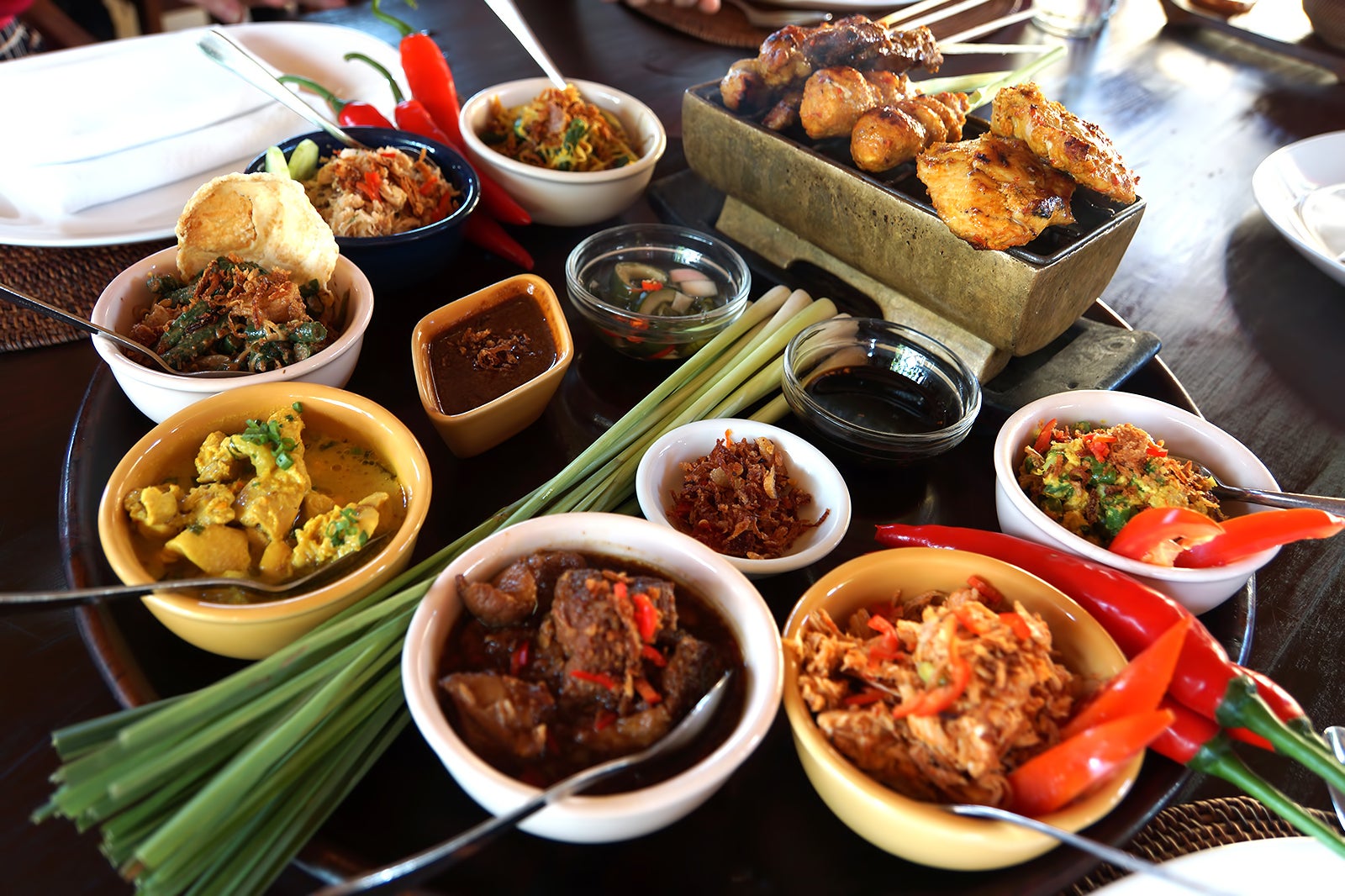
Culinary Delights Unveiled: Bali Traditional Cuisine
Bali, beyond its picturesque landscapes, boasts a culinary heritage as rich and diverse as its cultural tapestry. Bali Traditional Cuisine is a gastronomic journey that introduces travelers to the island’s unique flavors, where every dish tells a story of tradition, local ingredients, and a deep connection to Balinese culture.
Nasi Goreng: The Quintessential Fried Rice Experience
Bali Traditional Cuisine often begins with Nasi Goreng, a staple that embodies the essence of Indonesian flavors. This fried rice dish, typically adorned with a fried egg and crispy shallots, reflects the culinary artistry of blending sweet soy sauce, aromatic spices, and local herbs. It’s a dish that satisfies both the palate and the soul.
Babi Guling: The Celebration of Roast Suckling Pig
Babi Guling, a ceremonial dish, showcases the skill of Balinese chefs in crafting a succulent and flavorful roast suckling pig. A symbol of celebration, this Bali Traditional Cuisine is often prepared during special occasions and festivals. The crispy skin and tender meat make Babi Guling a gastronomic delight that captures the festive spirit of Bali.
Bebek Betutu: Slow-Cooked Duck in Balinese Spices
Bebek Betutu is a dish that exemplifies Bali Traditional Cuisine with its slow-cooked duck immersed in a rich blend of Balinese spices. The preparation involves marinating the duck in a mixture of turmeric, ginger, galangal, and aromatic herbs before slow-cooking it to perfection. Bebek Betutu is a testament to the intricate flavors of Balinese cuisine.
Lawar: Balinese Minced Meat Salad
Lawar, a traditional minced meat salad, is a Bali Traditional Cuisine that showcases the island’s use of local herbs and spices. Made from finely chopped meat, grated coconut, and an array of spices, Lawar is a flavorful dish that varies across regions. It reflects the diversity and creativity embedded in Balinese culinary traditions.
Bubur Sumsum: Sweet Rice Porridge Dessert
Bubur Sumsum, a sweet rice porridge dessert, offers a delightful conclusion to a Bali Traditional Cuisine experience. Made from rice flour, coconut milk, and palm sugar, this creamy and aromatic dessert embodies the sweet side of Balinese culinary heritage. It is often garnished with toppings like grated coconut or pandan leaves.
Sate Lilit: Grilled Seafood Skewers with a Twist
Sate Lilit puts a Balinese twist on the traditional Indonesian satay. Made from minced seafood, grated coconut, lime leaves, and a blend of spices, these skewers are grilled to perfection. Sate Lilit captures the essence of Bali Traditional Cuisine with its unique flavors and a delightful play on the classic satay.
Rujak: Spicy Fruit Salad for a Flavorful Contrast
Rujak, a spicy fruit salad, adds a burst of flavor to Bali Traditional Cuisine. Made from a mix of tropical fruits like pineapple, mango, and papaya, Rujak is combined with a spicy tamarind dressing. This refreshing and tangy salad provides a delightful contrast to the savory and rich dishes in Balinese cuisine.
Dadar Gulung: Pandan Pancakes with Sweet Coconut Filling
Dadar Gulung, or pandan pancakes with sweet coconut filling, is a popular dessert in Bali Traditional Cuisine. The vibrant green pancakes, infused with pandan leaf extract, are rolled with a sweet mixture of grated coconut and palm sugar. This dessert showcases the creativity and use of natural ingredients in Balinese sweets.
Megibung: Shared Feast for Community Bonding
Megibung is more than a dish; it’s a communal feast that exemplifies Bali Traditional Cuisine’s emphasis on community and togetherness. During Megibung, participants share a large platter of various dishes, fostering a sense of unity and connection. It is a culinary tradition that embodies the spirit of Balinese social gatherings.
Preserving Culinary Heritage: Responsible Gastronomy in Bali
As travelers indulge in Bali Traditional Cuisine, responsible gastronomy plays a vital role in preserving the island’s culinary heritage. Supporting local markets, engaging in culinary workshops, and respecting traditional cooking methods contribute to the sustainability of Balinese cuisine, ensuring its authenticity for generations to come.
Embark on a Culinary Journey: Bali Traditional Cuisine Awaits
In conclusion, Bali Traditional Cuisine is a flavorful journey through the heart of the island’s culinary heritage. From the iconic Nasi Goreng to the communal feast of Megibung, each dish tells a tale of tradition, culture, and the vibrant flavors that define Balinese gastronomy. Embark on a culinary journey, and let the tastes of Bali unfold before you.
For more information about Bali Traditional Cuisine, visit tiny-planes.com.
